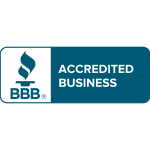How to Chose Agency for Business
GOALS
- Profitability: Business owners often aim to generate profits and financial stability.
- Growth: Expansion and growth of the business, whether through increased market share or entering new markets.
- Risk Management: Mitigating risks and ensuring the long-term sustainability of the business.
- Succession Planning: Planning for the future, including passing the business on to the next generation.
- Innovation: Entrepreneurs typically focus on creating innovative products or services.
- Market Disruption: Some entrepreneurs aim to disrupt existing markets with new and revolutionary ideas.
- Financial Success: Similar to business owners, financial success and profitability are key goals.
- Personal Fulfillment: Many entrepreneurs are driven by a passion for their ideas and a desire for personal fulfillment.
- Stability: SMEs often seek stability and sustainability in their operations.
- Market Penetration: Expanding their presence in existing markets.
- Cost Efficiency: Streamlining operations and reducing costs to improve overall efficiency.
- Customer Satisfaction: Building strong relationships with customers and ensuring satisfaction.
Common Challenges
Small and Medium-Sized businesses face challenges, including access to finance, market competition, marketing and branding, technology adoption, supply chain disruptions, and more.
- Financial Management: Seeking advice on budgeting, cash flow management, and accessing funding options can help SMEs navigate financial challenges.
- Business Planning: A comprehensive business plan with clear goals and strategies can provide a roadmap for success and attract potential investors.
- Technology Adoption: Consulting with experts to implement and integrate new technologies can enhance operational efficiency and competitiveness.
- Marketing and Branding: Working with marketing professionals can help SMEs create effective strategies to reach their target audience and build a strong brand presence.
- Human Resources: HR consulting can assist in talent acquisition, employee training, and developing strategies for employee retention.
- Supply Chain Optimization: Working with experts in supply chain management can help SMEs streamline operations, reduce costs, and enhance overall efficiency.
- Networking and Partnerships: Building relationships with other businesses, industry associations, and mentors can provide valuable insights, support, and potential collaborations.
- Market Research: Conducting thorough market research or working with professionals in the field can help SMEs understand market trends, customer needs, and potential opportunities.
- Sustainability Consulting: Getting assistance in adopting sustainable practices can benefit the environment, enhance the company’s reputation, and attract environmentally conscious consumers.


Strategy
“Blue Ocean Strategy” is a business strategy framework introduced by W. Chan Kim and Renée Mauborgne. The central concept is to move away from competition in a crowded market (“red ocean”) and instead create a new, uncontested market space (“blue ocean”). The strategy involves innovation and the pursuit of differentiation to offer unique value to customers. By focusing on innovation and creating new demand, companies can escape competition and achieve sustainable growth. The book, titled “Blue Ocean Strategy,” provides examples and principles to guide businesses in implementing this strategic approach.
The key concept of Blue Ocean Shift is about creating new market spaces, known as “blue oceans,” where competition is irrelevant, and companies can thrive by innovating and offering unique value propositions.
A systematic approach to help businesses shift from competitive, red ocean environments (where companies fight for existing market share) to uncontested blue ocean spaces and emphasizes the importance of value innovation, which involves simultaneously pursuing differentiation and low cost.
It encourages a mindset of innovation and creativity to break away from the constraints of traditional competition and find new, untapped market opportunities.
The Blue Ocean Shift process involves the following steps:
- Understanding the Current State: Analyze the current market conditions and identify the factors that contribute to intense competition (red oceans).
- Visualizing the Future: Envision a future where the company operates in a blue ocean, free from direct competition. This involves imagining new products, services, or business models that can create value for customers.
- Planning the Shift: Develop a strategic plan to transition from the red ocean to the blue ocean. This includes identifying the necessary resources, capabilities, and partnerships.
- Testing and Learning: Experiment with small-scale initiatives to test the feasibility and effectiveness of the blue ocean strategy. Learn from these experiments and refine the approach accordingly.
- Scaling Up: Once successful strategies are identified and tested, scale up the initiatives to capture a larger market share in the blue ocean.
A lean strategy is a business approach that emphasizes efficiency, continuous improvement, and waste reduction to create value for customers. Originating from lean manufacturing principles, it has been widely adopted across various industries.
By implementing these principles, organizations can streamline operations, improve quality, reduce costs, and ultimately enhance customer satisfaction. Lean strategies have been successfully applied in manufacturing, services, healthcare, and various other sectors.
Here is a summary of key aspects of a lean strategy:
- Customer Value Focus: Lean strategy centers around delivering maximum value to customers with minimal waste. Understanding customer needs and preferences is crucial.
- Continuous Improvement: Continuous improvement, often referred to as Kaizen, is a core principle. It involves small, incremental changes to processes, products, or services to enhance efficiency and quality.
- Waste Reduction: Eliminating waste is a fundamental goal. Types of waste in lean thinking include overproduction, excess inventory, defects, waiting time, unnecessary processing, transportation, and motion.
- Just-In-Time (JIT) Production: JIT aims to produce items at the exact time they are needed in the production process, reducing inventory costs and storage space.
- Pull System: This system involves producing items based on customer demand rather than pushing products through the production process. It helps prevent overproduction and reduces excess inventory.
- Respect for People: Lean strategy values and respects the contributions of all employees. It encourages employee involvement, empowerment, and collaboration.
- Visual Management: Visual tools, such as Kanban boards, are used to make processes transparent and easily understandable. This aids in identifying bottlenecks and maintaining a smooth workflow.
- Flexible Production: Lean systems are designed to adapt quickly to changes in customer demand or market conditions. Flexibility in production processes is a key aspect.
- Value Stream Mapping: This tool is used to analyze and optimize the steps involved in delivering a product or service, identifying areas for improvement.
- Kaizen Events: These are focused, short-term improvement projects that involve cross-functional teams working on specific issues to achieve rapid improvements.
By implementing these principles, organizations can streamline operations, improve quality, reduce costs, and ultimately enhance customer satisfaction. Lean strategies have been successfully applied in manufacturing, services, healthcare, and various other sectors.
Create a Business Model
The Business Model Canvas is a strategic management tool that provides a visual framework for developing, describing, and pivoting business models. It consists of nine building blocks that help entrepreneurs and business leaders to understand, design, and communicate key aspects of their business. Here’s a brief summary of each building block:
Customer Segments:
- Identifying the target customers or market segments that the business aims to serve.
Value Propositions:
- Describing the unique value that the product or service provides to customers and why they would choose it over alternatives.
Channels:
- Outlining the various ways the business delivers its value proposition to customers, including distribution and communication channels.
Customer Relationships:
- Defining the type of relationship the business establishes with its customers, such as personal assistance, self-service, or automated services.
Revenue Streams:
- Identifying how the business generates revenue from its customers, whether through sales, subscriptions, licensing, etc.
Key Resources:
- Listing the critical assets, skills, and partnerships required to deliver the value proposition, reach customers, and operate effectively.
Key Activities:
- Describe the essential tasks and processes the business must perform to create and deliver its value proposition.
Key Partnerships:
- Identifying external organizations, suppliers, or partners that contribute to the business model’s success.
Cost Structure:
- Outlining the significant costs incurred in operating the business, including fixed and variable costs.
The Business Model Canvas is a dynamic tool that can be adapted as a business evolves, making it a valuable resource for startups and established companies alike. It encourages a holistic view of the business and fosters strategic thinking in a visual and accessible format.
Resources
- Sales Tax Certificate | Florida Department of Revenue
- Florida Department of Business & Professional Regulation
- Agricultural Regulations | Florida Department of Agriculture & Consumer Services
- Contractor Licensing | State of Florida
- Division of Hotels & Restaurants
- Childcare Regulations | Florida Department of Children & Families
- Federal Income Taxes | IRS
- Unemployment Insurance Tax | Department of Revenue
- Florida Association of Insurance Agents
- Professional Insurance Agents of Florida
- Latin American Association of Insurance Agents
- 12 Month Cash Flow Projection (XLSX)


